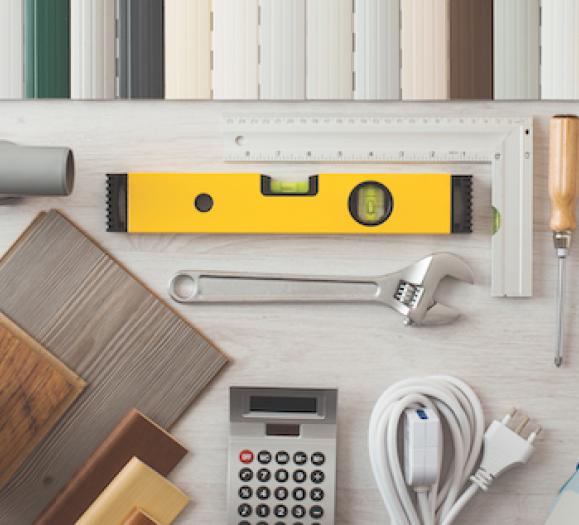The Consumer Product Safety Commission (CPSC), part of Consumer Reports (CR) which publishes news and research regarding product safety, news and developments for consumers, released new research today on a hazard "hiding in plain sight": dressers.
Originally published in the company's May 2018 issue, the research called for better mandatory tests to be performed on dressers to prevent future deaths. Here just a few quick stats from CR's research:
- Between 2000 and 2016, 195 people died from furniture, TVs and appliances tipping and falling on them.
- 82 percent of those deaths happened to children 6 years and younger.
- 46 percent of tip-over fatalities happen in the bedroom.
- CR's research estimates that every 17 seconds, someone is injured from furniture, TVs and appliances tipping over.
CR spoke with parents who had lost children due to furniture tip-overs. Many didn't know that such a hazard existed, and even fewer knew there were tools to anchor dressers to walls to prevent such accidents.
You can (and most definitely should) read the whole report, which includes more industry reactions from manufacturers as well as the complications on this testing that they're currently facing, but here's a brief on the research conducted and how your home furnishings showroom can help prevent more of these horrible accidents from happening.
How CR conducted its research
CR obtained and analyzed thousands of incident reports, which it obtained by filing Freedom of Information Act requests to the CPSC, to better understand the circumstances of the injuries and deaths. It also conducted its own tests.
Currently, furniture manufacturers can comply with a voluntary test and standards to make sure their clothing storage units can hold a certain weight limit. In the test, the top drawer must be open, and the dresser must remain upright when holding a 50-pound weight from that top drawer. This test was meant for units 30 inches tall and above. Additionally, manufacturers that meet the standard must also include a mandatory warning label and tip restraints with the compliant product.
CR then gathered 24 storage units, including chest, dressers and nightstands, that represented what it called "a cross-section of the retail market." The units came from 11 manufacturers, six from South Shore and five from Delta. CR did not explain their cross-section definition, and it's worth pointing out that units from mega-retailers like Ashley Furniture were not tested. The units were purchased between March 2017 and February 2018. The tip-over test involved three separate tests, described as such from CR:
- Test 1: All drawers were open.
- Test 2: The top drawer was open and a 50-pound weight was hung from the drawer front (the current voluntary standard).
- Test 3: The top drawer was open and the 50-pound weight was increased in 1-pound increments to a maximum of 60 pounds (CR's own test, meant to represent the more accurate weight of a 6-year-old).
CR found that 13 of the 24 units tested met that tougher 60-pound challenge already.
The current voluntary test requires just 50 pounds, but CR chose to include a 60-pound test to more accurately represent the weight of children closer to that six-year mark. It is not mandatory for dressers shorter than 30 inches, which CR strongly disagrees with and advocates for those shorter dresses to be included.
You can see the results of each tested unit and their manufacturers here.
What your home furnishings showroom can do
Tip-over fatalities devastate families, and from CR's research, families don't often know how to prevent them until it's too late. That's where you — the home furnishings showroom — come in. With your help, you can be a resource for consumers and help them protect their young children.
The first thing to do is talk with the dresser manufacturers you work with. Ask them if they comply with the voluntary 50-pound weight test and if their dressers pass it. If they don't know, that should be a red flag. You might consider purchasing from a different manufacturer or performing the test yourself in your showroom. As CR reported, most of the units tested do comply with the voluntary standard, and most of those tested will withstand even CR's more rigorous 60-pound test. Still, it's worth chatting with manufacturers about at High Point Market next month.
Once you feel comfortable with the products you're selling, start talking to your customers about tip-over accidents. Many consumers just don't know about these hazards, so education is key here. You don't have to scare them, but talking about the dangers and how to prevent them will probably make parents feel more at ease with their purchases.
Some showrooms stock anchoring tools to help consumers secure their dressers. If you do, take the time to explain to every customer how to install them correctly. If you don't stock these tools, that's okay. Make sure you know of one or two retailers (at least one local) that have these tools.
Finally, get the word out online. Blog about it, share the CR article and research with your consumers, create how-to videos and teach readers how to anchor their dressers. This is a great way to position yourself as an expert and offer additional value to your followers and readers.
What do you think of CR's latest furniture tip-over research? Share your thoughts in the comments.
Photo: Pexels







